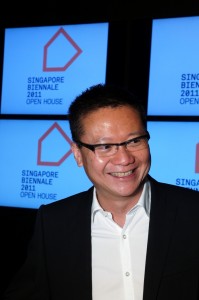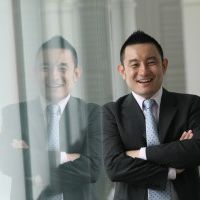Singapore Biennale 2011 | In Conversation with Matthew Ngui

However, in this extremely ambitious city-state where the development of the arts is as yet in its infancy, one wonders if this year's biennale genuinely succeeds in engaging its audience or has it simply become a cultural showcase which shows off the best that the host city has to offer to international visitors.
culture360.org contributor Bharti Lalwani catches up with Artistic Director Matthew Ngui to find out more.
1. Firstly, how did you, Trevor Smith and Russell Storer form the curatorial team of SB'11 and could you describe your role as the Artistic Director please
I have come into contact with Trevor and Russell as professional colleagues on a number of occasions in the past and have worked together with them on projects. I have found them to be ethical, precise curators, with particular interest areas in contemporary art that they wished to continue to explore. Together, their art knowledge almost spanned the globe, although they would never admit that. As a team, we digested and came up with the thrust of SB2011 in response to a question I initially posed to ourselves - how do we identify and present artistic process in a meaningful way within the context of the Singapore Biennale. I see my role as that of a funnel - identifying and channelling expertise and talent in the arena of art into a bottle, that is amongst many other bottles, to be ingested by many.
2. This year's Biennale is quite different from the previous two which followed the themes "Belief" and then "Wonder"- This year's "Open House" is a rather generic theme, how were the artists chosen and briefed (any issues with censorship)?
The curatorial team titled the exhibition "Open House" in an attempt to create an open house into the artist's practice and, as the practice is located within the city, we are also opening up the city (and Singapore) for engagement. Basically, it is an invitation to visit artistic process and the city. As such, emblematic spaces in Singapore were analysed in relationship to different exhibition venues available to us - we have in Singapore the flat (home), the markets, ports and public space and these were aligned these to our venues according to their architectural and historical aspects. Artists were chosen for the relevance of and acute sensibilities within their work processes to the city and life in an urban environment. We encouraged new work to be made, especially in Singapore, where like any other city in the world, has its own regulatory frameworks.
3. How were the artists and the venues chosen? How much time do these artists usually get for preparation?
 We try to have as many artists from Singapore or within the region in the Singapore Biennale but in the end, the relevance of their practices and work to the curatorial direction for the biennale is the most important consideration. There isn't a fixed time in developing work - we try to give as much time as we can for the development of a strong piece for the biennale. The venues were chosen according to how we could best present the biennale, and in the case of SB2011, their relationships to Singapore as a city, its history and architecture.
We try to have as many artists from Singapore or within the region in the Singapore Biennale but in the end, the relevance of their practices and work to the curatorial direction for the biennale is the most important consideration. There isn't a fixed time in developing work - we try to give as much time as we can for the development of a strong piece for the biennale. The venues were chosen according to how we could best present the biennale, and in the case of SB2011, their relationships to Singapore as a city, its history and architecture.4. What was the main objective of this Biennale and what is the demographic profile of the visitors to the Biennale - those interested in and educated about art or the general Singapore audience?
We try to reach out to the Singaporean public and the international visitor. For example, our in-house outreach programme has involved 3200 students from 47 schools in a drawing-animation project that lasted for just under a year.
5. What were the challenges in setting up such a biennale? Were there any budgetary constraints as compared to the previous two biennales?
Artists ideas (never mind curatorial!) can be a challenge to implement. However, this is precisely where the traction is for a good work or exhibition - that it engages the status quo and pushes us to view our world differently. And yes, I wish we had more funds.
6. You are yourself a visual artist working in the areas of installation, video, performance and public art, with a focus on site-specificity and community engagement - how did you think the biennale as a whole succeeds in engaging the local communities?
As mentioned above - the way in which we are trying to communicate the biennale - that there are strong references to our venues as the HDB flat (SAM and 8Q), the city and markets/malls (National Museum), our sea and airports (Old Kallang Airport) and public space (Merlion Park, Marina Bay).
Bharti Lalwani has a BA in Fine Art and an MA in Contemporary Art; She writes for several publications across SE Asia and India.
Similar content
30 Jan 2012
17 Oct 2011
17 May 2011






